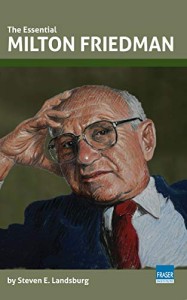
Edited to add: As Salim suggests in comments, the entire problem is that I assumed an implausible value for wealth (which should be interpreted as lifetime consumption). With a more plausible number, everything makes sense. Mea culpa for not realizing this right away. I will leave this post up as a monument to my rashness, but have inserted boldfaced comments in appropriate places to update for my new understanding.
This is bugging me. It’s a perfectly simple exercise in valuing lives for the purposes of cost-benefit analysis. I would not hesitate to assign it to my undergraduates. But it leads me to a very unsettling and unexpected place, and I want to know how to avoid that place.
It’s also a little geeky, so I hope someone geeky will answer — ideally, someone geeky who thinks about this stuff for a living.
Start here: You’re a trapeze artist who currently works without a net. There’s a small probability p that you’ll fall someday, and if you fall you’ll die. You have the opportunity to buy a net that is sure to save you. What are you willing to pay for that net?
Well, let’s take U to be your utility function and W your existing wealth. If you don’t buy the net, your expected utility is
p U(death)+(1-p) U(W)
But we can simplify this by adding a constant to your utility function so that U(death)=0. So if you don’t buy the net, your expected utility is just
(1-p )U(W)
If you do buy a net at price C, then you’re sure to live, with utility
U(W-C) = U(W) – C U′ (W)
where the equal sign means “approximately equal” and the approximation is justified by the assumption that the probability of falling (p) is small, so your willingness to pay (C) is presumably also small.
Equating these two expected utilities gives me C = p U(W)/U′ (W). If we set V = U(W)/U′ (W), then C = pV. That is, you’re willing to pay pV to protect yourself from a p-chance of death. This justifies calling V the “value of your life” and using this value in cost-benefit calculatios regarding public projects that have some small chance of saving your life (guard rails, fire protection, etc.)
So far, so good, I think. But now let’s see what happens when we posit a particular utility function.
I will posit U(W) = log (W), which is a perfectly standard choice for this sort of toy exercise, though actual real-world people are probably a bit more risk-averse than this. Except I can’t just leave it at U(W) = log(W), because my analysis requires me to add some constant T to make the utility of death equal to zero.
So let’s take E to be the income-equivalent of death; that is, living with E dollars is exactly as attractive as not living at all. Then I have to choose T so that log(E) + T = 0. In other words, T = -log(E).
Now I know that, with your current wealth equal to W, the value of your life is U(W)/U'(W) = W log(W/E) .
Now as a youngish but promising trapeze artist, you’ve probably got some modest savings, so lets make your current wealth W=50,000 (with everything measured in dollars). (Edited to add: This was the source of all the difficulty. W represents something like lifetime consumption, so 50,000 is a ridiculously small number. Let’s go with 5 million instead.) Then here is the value of your life, as a function of E, the income-equivalent of death.
If E = .0001 (that is, if dying seems just as attractive to you as living with your wealth equal one-one-hundredth of a penny), then the value of your life is $1 million. (Edited to add: This should actually be E= 4.1 million dollars, which is considerably more than one-one-hundredth of a penny.)
If E = 6.92 x 10-82, then the value of your life is $10 million. (Edited to add: This should be E = $677,000 which might be a plausible figure.)
If E = 1.29 x 10-864, then the value of your life is $100 million. (Edited to add: This should be E equal to about one cent, which is of course implausible, but that’s fine, because a $100 million value of life is also implausible.)
Edited to add: I won’t continue to edit the details in the rest of this post, but I think this is all straightened out now. Thanks to those who chimed in, and sorry to have taken your time on this!
Now I am extremely skeptical that you, I, or anyone else is capable of envisioning the difference between living on 10-82 dollars and living on 10-864 dollars. Yet the decision of whether to value your life at $10 million or at $100 million hinges entirely on which of these seems more to you to be the utility-equivalent of death.
There is some purely theoretical level at which this is no problem. It is possible that you’d rather die than live on 10-864 dollars and would rather live on 10-863 dollars than die. But I am extremely skeptical of any real-world cost-benefit analysis that hinges on this distinction.
(And this is the range in which we have to be worried, since empirical estimates of the value of life tend to come in somewhere around $10 million.)
If I make you less risk-averse — say with a relative risk aversion coefficient of 4 — almost the entire problem disappears. But the tiny part that remains is still plenty disturbing. Then I get:
If E = .007 (that is, about 2/3 of a penny), the value of your life is $1 million.
If E = .003 (about 1/3 of a penny), your life is worth $10 million.
If E = .0015 (a sixth of a penny), your life is worth $100 million.
So we need to tell the folks in accounting to value your life at either $1 million or $100 million, depending on where you draw the suicide line between having two thirds of a penny and having one sixth of a penny.
This is nuts, right? And how squeamish should it make me about the whole value-of-life literature? And what, if anything, am I missing?
Click here to comment or read others’ comments.



